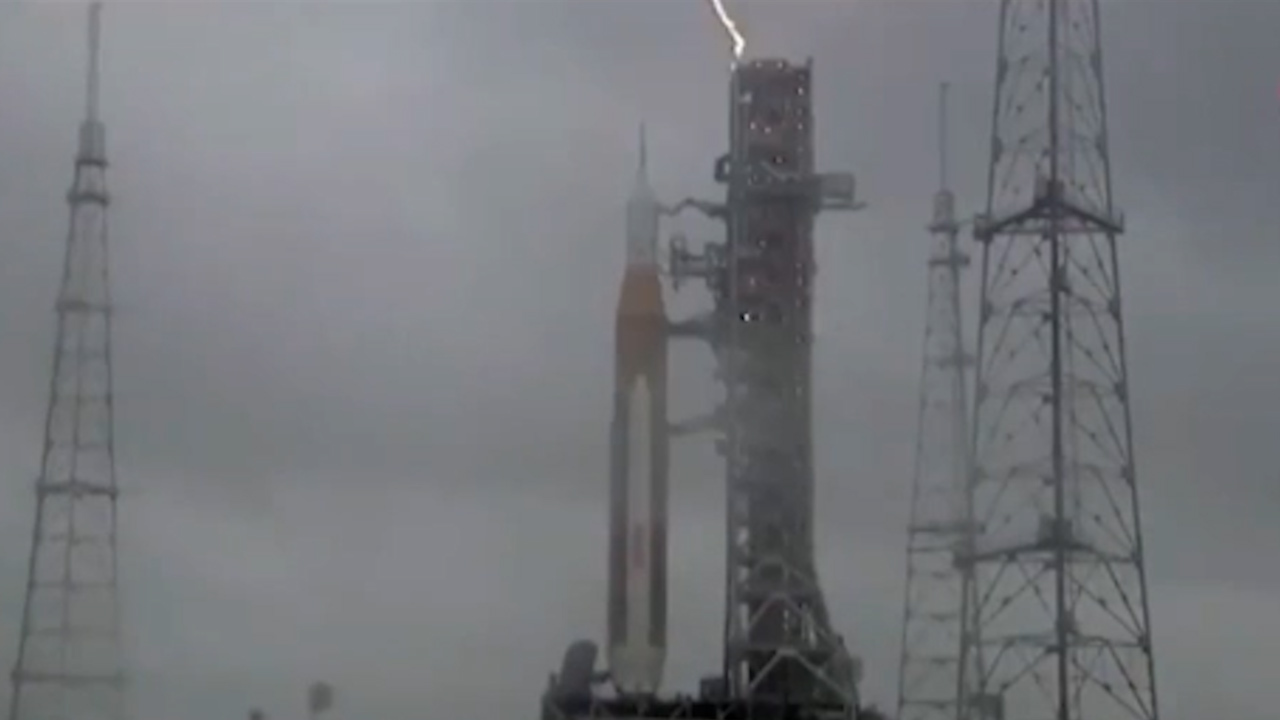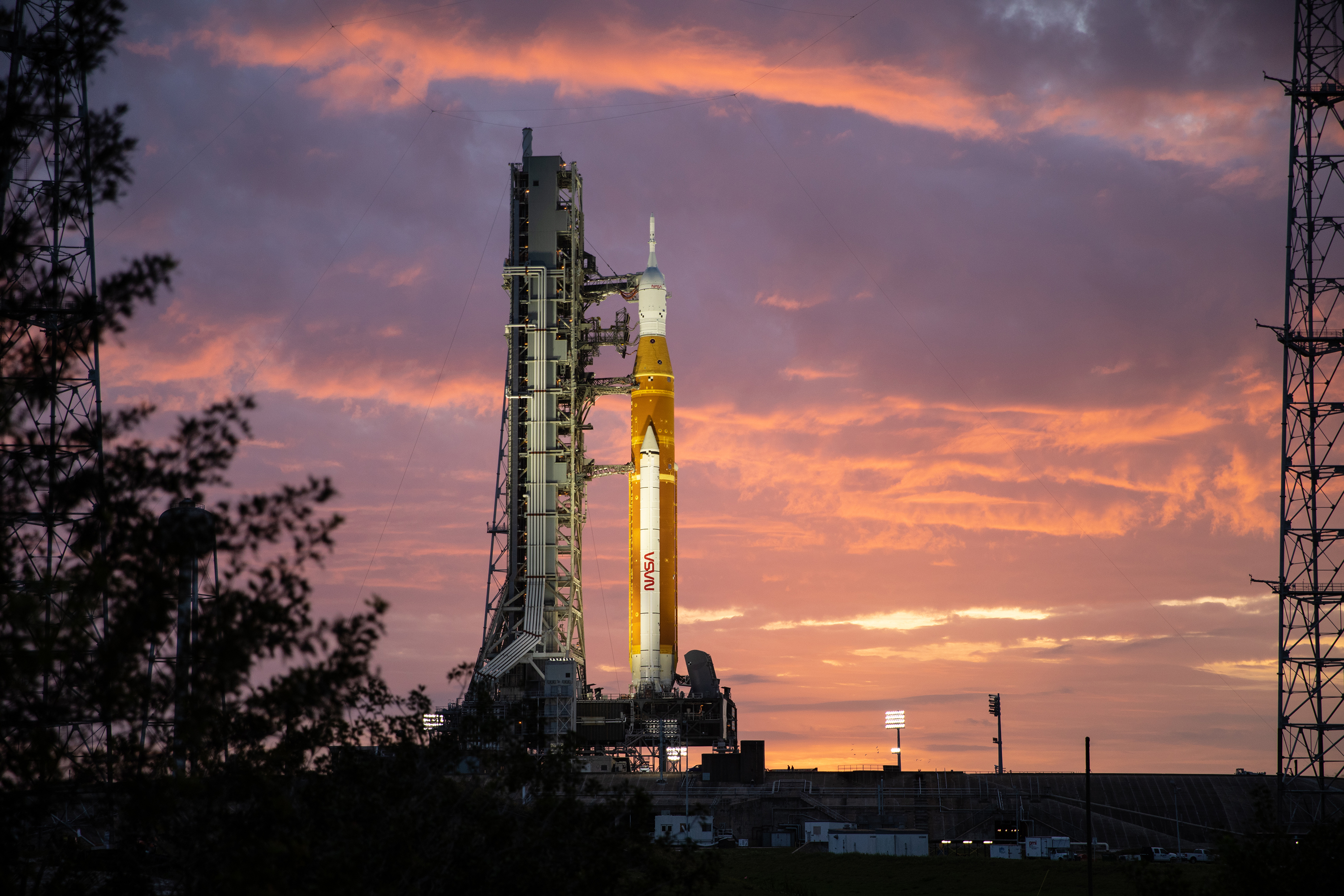The rocket that will kickstart humanity's attempts to return people to the moon weathered four lightning strikes on the weekend, with the storm caught on NASA's live feed.
"Engineers confirmed there were four lightning strikes to the lightning towers within the perimeter of Launch Pad 39B," NASA said in a blog post.
"Teams have determined the first three were low intensity strikes to tower two and are continuing to review data from the fourth strike, which was higher in intensity to tower one.
READ MORE: Biden calls for Putin to face war crimes trial

"At the time of the strikes, Orion and the Space Launch System (SLS) core stage were powered up and the solid rocket boosters and interim cryogenic propulsion stage (ICPS) were not."
The lightning strikes, at the Kennedy Space Centre in Florida, preceded two scrapped "wet dress rehearsals" for the launch by NASA, who denied the strikes had affected the rocket at all.
The rehearsal simulates every stage of launch without the rocket actually leaving the launchpad - a crucial part of preparation.
READ MORE: Putin ally's $120 million superyacht seized

The test was originally scheduled to be completed on Sunday but was put on hold before the propellant was loaded. That was due to problems with two fans used to provide pressure to the mobile launcher - the movable tower which the rocket sits upon before it lifts off.
NASA said on Monday it was able overnight to resolve the malfunction of the fans, which are needed to pressurise enclosed areas inside the launcher and keep out hazardous gases.
However, the rehearsal was stopped for the second time Monday due to a vent valve issue, NASA announced via Twitter.
The results of the wet dress rehearsal will determine when the uncrewed Artemis I will launch on a mission that goes beyond the moon and returns to Earth. The uncrewed mission is expected to launch in June or July.
READ MORE: Mum remains in critical condition after deadly NSW landslide
This mission will kick off NASA's Artemis program, which is expected to return humans to the moon and land the first woman and the first person of colour on the lunar surface by 2025.
During the flight, the uncrewed Orion spacecraft will launch atop the SLS rocket to reach the moon and travel thousands of miles beyond it - farther than any spacecraft intended to carry humans has ever traveled. This mission is expected to last for a few weeks and will end with Orion splashing down in the Pacific Ocean.
Artemis I will be the final proving ground for Orion before the spacecraft carries astronauts to the moon, 1000 times farther from Earth than where the International Space Station is located.
After the uncrewed Artemis I flight, Artemis II will be a crewed flyby of the moon, and Artemis III will return astronauts to the lunar surface. The time line for the subsequent mission launches depends on the results of the Artemis I mission.
With CNN.
